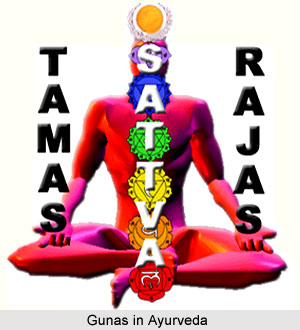 Guna of stillness or tamas, reload the universe and its beings. It is the main principle of support within the material universe. The principle of self-organizing activity or rajas gives motion and co-ordination to the universe and human life. The principle of vocal and cosmic intelligence or sattva, maintains universal and individual inactivity and awareness. These three gunas operate through five elements they have created directly.
Guna of stillness or tamas, reload the universe and its beings. It is the main principle of support within the material universe. The principle of self-organizing activity or rajas gives motion and co-ordination to the universe and human life. The principle of vocal and cosmic intelligence or sattva, maintains universal and individual inactivity and awareness. These three gunas operate through five elements they have created directly.
Tamas guna works closely with the physical functions of the body on the physical plane. It is summarized as doshas, tissues and wastes. It is believed that Tamas exercises great influence on the body"s water aspect and gives the body its ability to consider and to bear long periods of growth.
Rajas guna influences the psychic plane of existence and works closely with the psychological functions of the body. Rajas exercises the most influence on the body`s air aspect, Vata Dosha (humour) on the physical level. This gives one the power to transform what is being perceived externally into thoughts, concepts, visions and dreams. The third principle sattva, permeates each and every minute cell of human body. It functions through the existential states of awareness. However it also influences the physical organism to some extent. It is believed that the sattva exercises the most influence on its fire aspect. The sattva also maintains the cosmic memory of the universe.
The three primordial forces: sattva , rajas & tamas interweave to create the five elements or panchmahabhutas which gives birth the entire creation. According to Ayurveda everything is composed of the Panchamahabhutas
This article is a stub. You can enrich by adding more information to it. Send your Write Up to content@indianetzone.com





